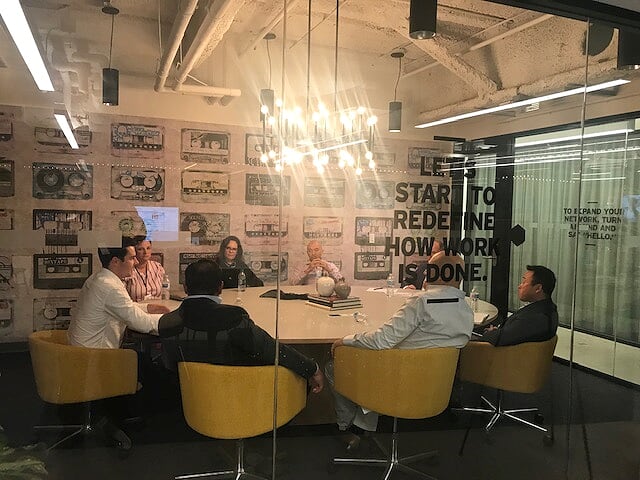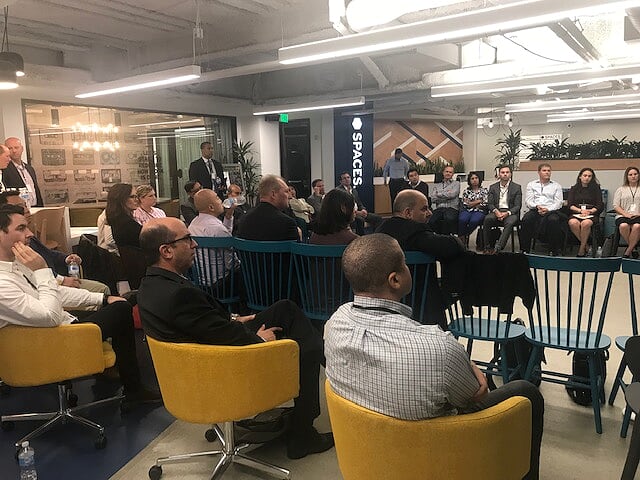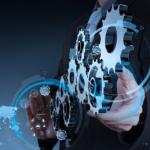 Last month I attended the FP&A Board event in San Francisco focused on the latest advances in financial analytics. The event was well attended and composed of a main presentation punctuated by thoughtful audience discussions, group polls and comparisons to global statistics, a case study presentation, and small group break-away sessions.
Last month I attended the FP&A Board event in San Francisco focused on the latest advances in financial analytics. The event was well attended and composed of a main presentation punctuated by thoughtful audience discussions, group polls and comparisons to global statistics, a case study presentation, and small group break-away sessions.
As a Senior Manager of FP&A in Biotechnology I found this event to be extremely informative and valuable, fostering new professional connections and inspiring new ways of thinking about improvements within my own organization. Following are the key takeaways and highlights from the event.
The evening’s attendees were leaders of corporate FP&A teams spanning a wide array of industries and organizational structures. Despite the large degree of diversity, the group discussed an array of common challenges affecting almost every organization represented. The presentation cited the statistic that 97% of managers are dissatisfied with their FP&A processes, which strongly resonated with the group in attendance. The top challenges identified were:
- MDM
- Talent acquisition
- Speed of delivery
Other central challenges repeatedly came up over the course of discussion, including battling traditional budget cultures, maintaining a high quality of data, working around outdated tools and technology, and lack of investments in FP&A especially in mature industries where cost-cutting measures are common. There was widespread acknowledgement that because ROI for financial tech investments are longer-term, they are often difficult to justify to senior leadership as compared to similar investments in other corporate areas.

The presentation then turned toward solutions to these common challenges, with emphasis on advanced analytics models. Advanced and leading-state analytics technology is defined by the following:
- Integrated planning processes
- Driver-based models and leading analytical matrixes
- Real-time collaborative planning
- Multi-dimensional scenario analysis
- Advanced/predictive analytics
The group consensus was that currently implemented models and systems lacked many or all of these components, and dialogues continued into the potential benefits of moving toward this type of advanced format. Thoughtful points were brought up around the difficulty of harmonizing drivers across organizations, making trade-offs between good decision making and quick decision making, the need to stress-test scenarios before widespread implementation, and the importance of unknown drivers in an industry or company (perhaps even more so than the known drivers). No one in attendance used a driver-based or advanced analytical model in their respective organization, and the group agreed that general support for and implementation of such a system remains highly elusive.

Some illustrative insights into a real-world FP&A systemic shift were shared during the case study presentation by Viji Subramanyam, who serves as Head of Global FP&A at Applied Materials. In her presentation, Viji detailed the evolution of her organization from using a traditional FP&A model to an enhanced framework which included automated and streamlined processes, a centralized ERP, dashboard-style reporting, and the development of key performance indicators to monitor and communicate progress.
Other changes included moving toward ongoing rolling-forecasts, extending forecast periods from 3- to 5-year horizons, and designing a combination top-down and bottoms-up process that starts with direction from the CEO, then builds “what it takes to get there.” In the end, the Applied Materials FP&A team was successful in creating a set of advanced tools that was not only more accurate and efficient than what had preceded it, but went “beyond the numbers to connect data and drive decisions.”
Toward the end of the event, we had the chance to engage in small-group focused discussions around some of the key areas that came up throughout the event. Some key takeaways and conversation points from the team discussions are summarized below:
1) People & Culture
- Importance of fostering the right balance of collaboration; how do you get Finance to the table when making decisions?
- Value of properly training FP&A staff and communication-focused leadership
- Importance of tying FP&A work back to the business (especially valuable for less-experienced team members)
2) Processes
- Bad processes get perpetuated, requires close monitoring
- Start with the end in mind
- When making a systemic change, it’s best to start from scratch rather than make incremental changes
- Know who your stakeholders are and utilize management as champions
3) Technology & Analytics
- Before choosing a tool/technology, assess where you are today and where you want to go
- Find motivated, passionate champions to drive implementation and change
- When implementing a change, phase it out
4) FP&A Business Partnering
- Common problem of experience gaps
- Encourage FP&A team members to sit with the business and be seen as true partners
- Building trust takes time; show how you provide value, and that you don’t just cut costs
- Talent needs to be mature enough to understand the problems of the business
The event concluded with an extended networking session, giving attendees and organizers the chance to personally connect and delve into some of the most salient topics of the evening. I find it’s rare to be able to connect with other FP&A leaders especially outside of my industry, and I appreciated the opportunity to foster new connections with such a lively and engaging group of colleagues.
In summary, I found the FP&A Board event to be an extremely creative and valuable professional event, bringing together not only insights on the latest financial analytics trends and technologies but also a diverse and high-quality group of FP&A leaders dedicated to evolving their organizations and their field. I look forward to attending the next event in San Francisco.
The event was sponsored by CCH Tagetik, SPACES and SystemsAccountants



